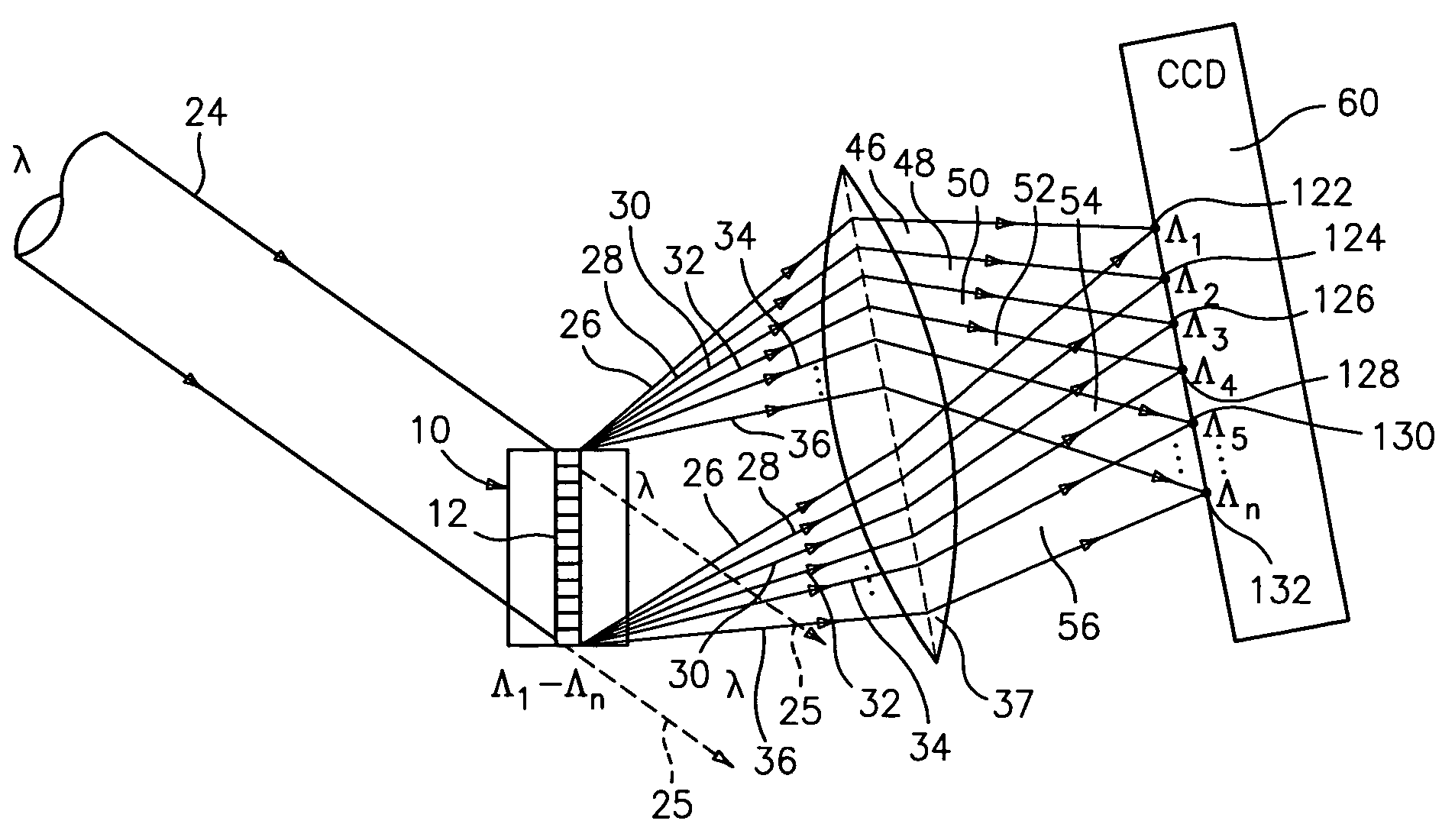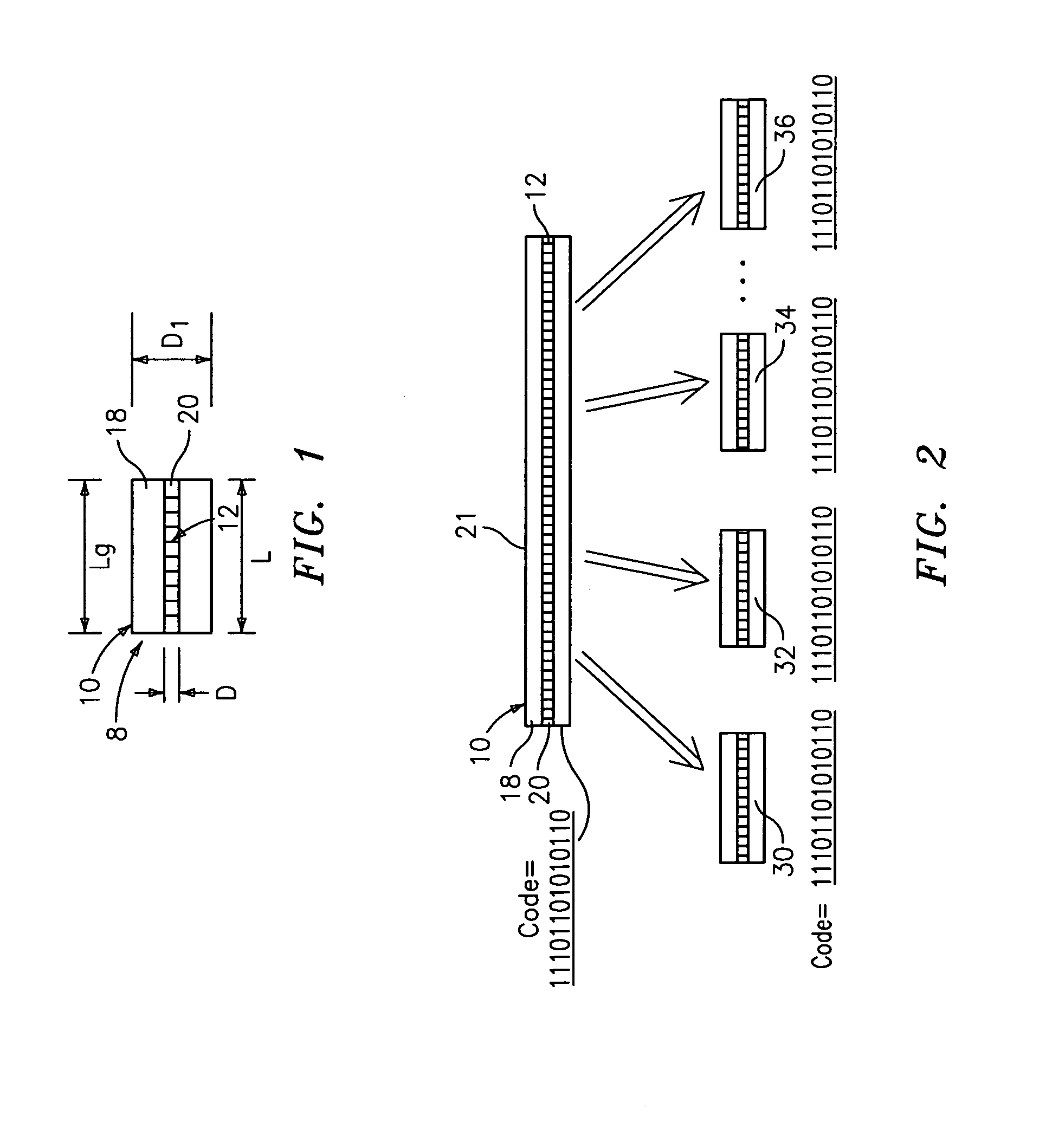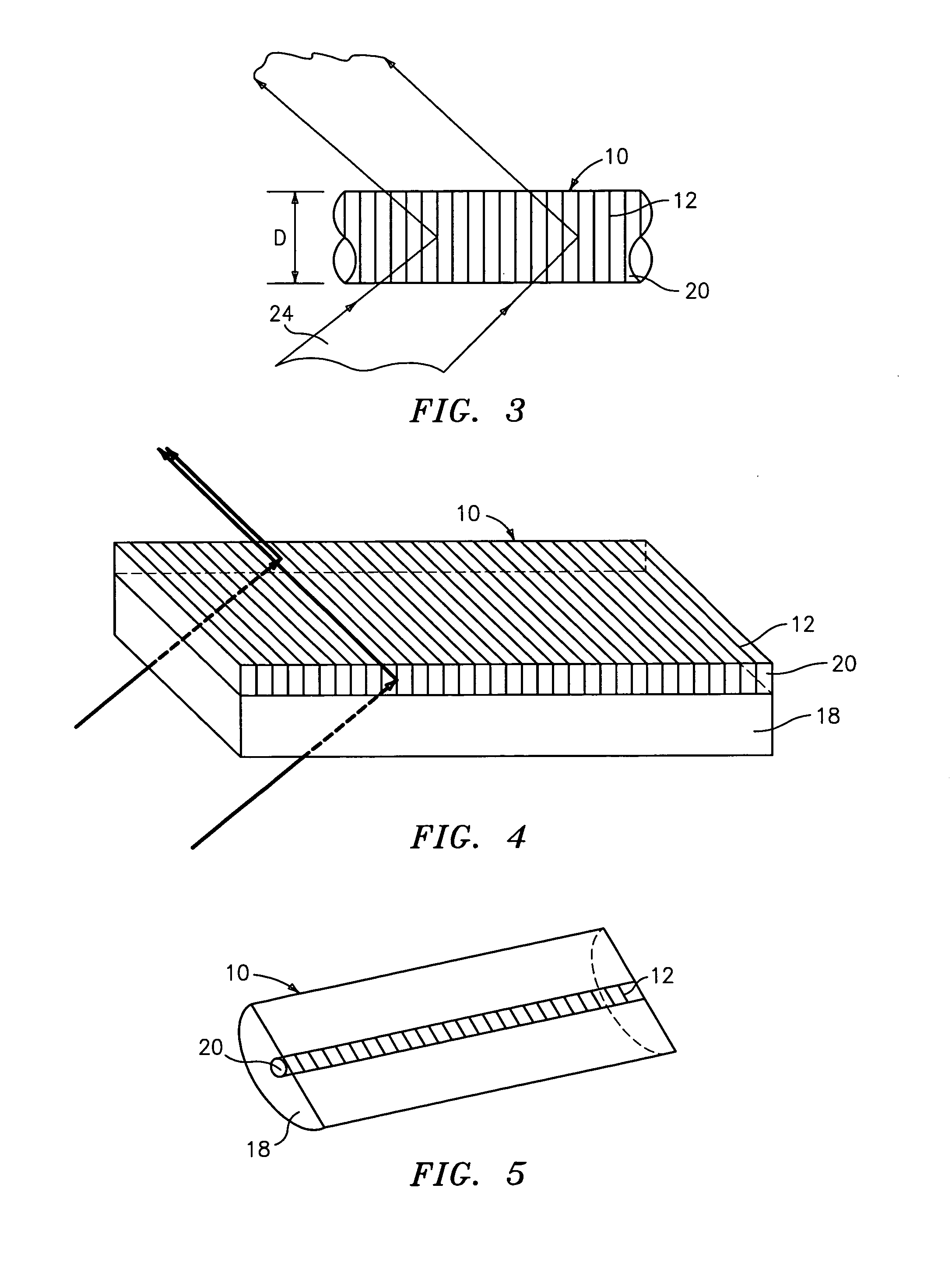Diffraction grating-based encoded particle
a technology of encoded particles and diffraction grating, applied in the field of optical identification, can solve the problems of insufficient bar codes, insufficient different codes, and inability to withstand harsh temperature, chemical, nuclear and/or electromagnetic environments, and achieve the effect of making very small
- Summary
- Abstract
- Description
- Claims
- Application Information
AI Technical Summary
Benefits of technology
Problems solved by technology
Method used
Image
Examples
Embodiment Construction
[0057]Referring to FIG. 1, an optical identification element 8 comprises a known optical substrate 10, having an optical diffraction grating 12 disposed (or written, impressed, embedded, imprinted, etched, grown, deposited or otherwise formed) in the volume of or on a surface of a substrate 10. The grating 12 is a periodic or a periodic variation in the effective refractive index and / or effective optical absorption of at least a portion of the substrate 10.
[0058]The substrate 10 has an inner region 20 where the grating 12 is located. The inner region may be photosensitive to allow the writing or impressing of the grating 12. The substrate 10 has an outer region 18 which does not have the grating 12 therein.
[0059]The grating 12 is a combination of one or more individual spatial periodic sinusoidal variations in the refractive index that are collocated along the length of the grating region 20 of the substrate 10, each having a spatial period (or pitch) Λ. The grating 12 (or a combina...
PUM
| Property | Measurement | Unit |
|---|---|---|
| length | aaaaa | aaaaa |
| length | aaaaa | aaaaa |
| length | aaaaa | aaaaa |
Abstract
Description
Claims
Application Information
 Login to View More
Login to View More - R&D
- Intellectual Property
- Life Sciences
- Materials
- Tech Scout
- Unparalleled Data Quality
- Higher Quality Content
- 60% Fewer Hallucinations
Browse by: Latest US Patents, China's latest patents, Technical Efficacy Thesaurus, Application Domain, Technology Topic, Popular Technical Reports.
© 2025 PatSnap. All rights reserved.Legal|Privacy policy|Modern Slavery Act Transparency Statement|Sitemap|About US| Contact US: help@patsnap.com



